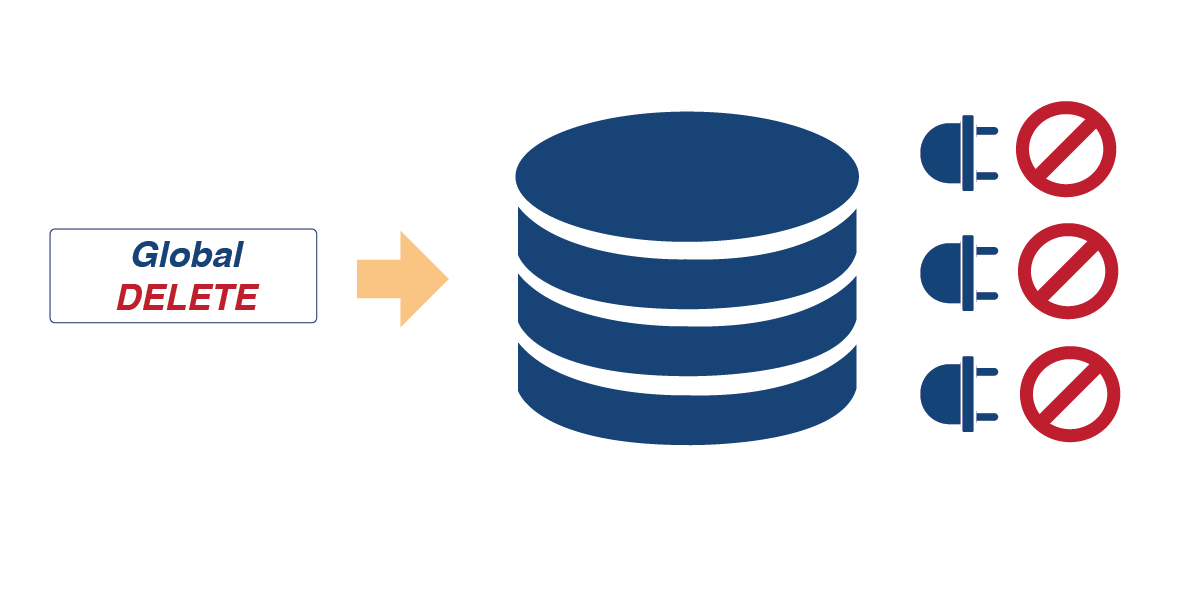It is often required to delete federated data records (DRs). Not only the links to the data but the physical source entities associated with federated DRs. More on deleting data records can be found at the YOUnite Server API /drs endpoint documentation.

Federated
If the DR is a FEDERATED data domain type, it will attempt to delete source entries at source adaptors and their corresponding adaptor-to-domain-entry links internal to the YOUnite.
Limit to Specific Adaptors
A request can be made to delete DR source entries at specific adaptors and their corresponding adaptor-to-domain-entry links by using the adaptorUuids request parameter.
For example:
DELETE /drs/aaaf2c8a-b39c-44df-950f-b4d79f0f1b39?adaptorUuids=7ba4da9c-30a4-4314-993a-28aaf08ad319,de5896ee-6cbf-4bd3-9dc0-75a2f4120c37
This above request would delete the source entity linked to DR with UUID: aaaf2c8a-b39c-44df-950f-b4d79f0f1b39
At the adaptors with UUIDs: 7ba4da9c-30a4-4314-993a-28aaf08ad319 and de5896ee-6cbf-4bd3-9dc0-75a2f4120c37
Delete Entries and Metadata at All Adaptors
If no adaptor UUIDs are specified then an attempt to delete all source entities and adaptor-to-domain-entry links for the DR is made.
For example:
DELETE /drs/aaaf2c8a-b39c-44df-950f-b4d79f0f1b39
How to Check if a DR Entry Lives at an Adaptor
To check if YOUnite has an adaptor-to-domain-entry link for a given DR at an adaptor, use the following:
GET /drs/{dr-uuid}/adaptor/{adaptorUuid}/check
If the link exists a 200 OK is returned. If an entry doesn’t exist at the adaptor a 404 NOT FOUND is returned.
A NOT FOUND is not a definitive result since YOUnite makes no assumptions if a DR exists at an adaptor was honored until the adaptor sends a data event to YOUnite for a given DR. For example:
-
Adaptor responding to a GET request.
-
PUT or POST data event request is sent from the adaptor to YOUnite.
Permissions & Governance
If the API consumer doesn’t have access to inbound or outbound ACLs then the request will fail with an UNAUTHORIZED.
If the SSO id associated with the API consumer belongs to multiple zones, then the zone UUID for which the request is being made under must be supplied.
Summary
The difference between specifying and not specifying adaptor UUIDs is:
-
adaptorUuids: Deletes are limited to the source entities and the specified adaptors and their corresponding adaptor-to-domain-entry links. -
No adaptorUuids: The request applies to all capable adaptors, their corresponding adaptor-to-domain-entry links and the internal DR itself. The zone user’s zone must have DELETE permission at all source adaptors for the domain where there are adaptor-to-domain-entry links.